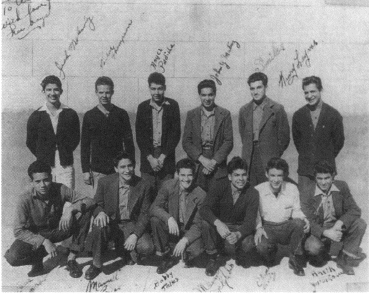|
| |
The Sleepy Lagoon Case

Sleepy Lagoon Case
After World War II Chicanos returned home to their
barrios with new hope. The G.I. Bill provided Chicano veterans
with new opportunities for education, job training, and home loans
that were never possible before. Economic competition for semi-skilled
industrial jobs created tensions between Chicanos and whites in the
greater Los Angeles area.
One major event was the "Sleepy Lagoon case." On August 2, 1942, José
Díaz was found unconscious on a rural road near Los Angeles,
apparently the victim of a severe beating. He passed away never regaining
consciousness. His death was a result of a fracture at the base of the
skull. No weapon was found or proof of murder established. Díaz
had participated in a gang rumble the preceding evening at a nearby
swimming hole. As a result 23 Chicanos and 1 Anglo who had participated
in the fighting were charged with murder.
Two of the indicted youths asked for the separate trials and were subsequently
released. The other 22 were tried together on 66 charges. The Judge Charles
W. Fricke made it known of his bias against Mexicans, and the prosecution
repeatedly called attention to the racial aspects of the trial.
Throughout the court proceedings the defendants were denied haircuts
and a change of clothing. They wanted the defendants to resemble the
prosecution's stereotype of the unkempt Mexican.
In January 1943, the jury found 3 of the youths guilty of first-degree
murder, 9 guilty of second-degree murder, and 5 guilty of assault. The
remaining 5 were found not guilty. In October 1944, the California
Distract Court Appeals unanimously reversed the lower court's verdict,
dismissing the charges for lack of evidence.
Even though the charges were dropped, The Sleepy Lagoon case had
widespread negative repercussions. The Los Angeles papers exploited
the situation by using sensational journalism to emphasize Chicano
crime. The pressure was now on the police to stop this so called
"crime wave." The police reacted with systematic roundups of Chicano
teenagers. This included police harassment of Chicano youth clubs,
arrests based on race and mere suspicion, and over policing
of Chicanos barrios. It got to the point where Washington put
pressure on the newspapers to stop using the word "Mexican"
in crime stories. The papers replaced it with nonspecific but
negative racial epithets of "Pachucos" and "Zoot suiters".
|
|
|
|




